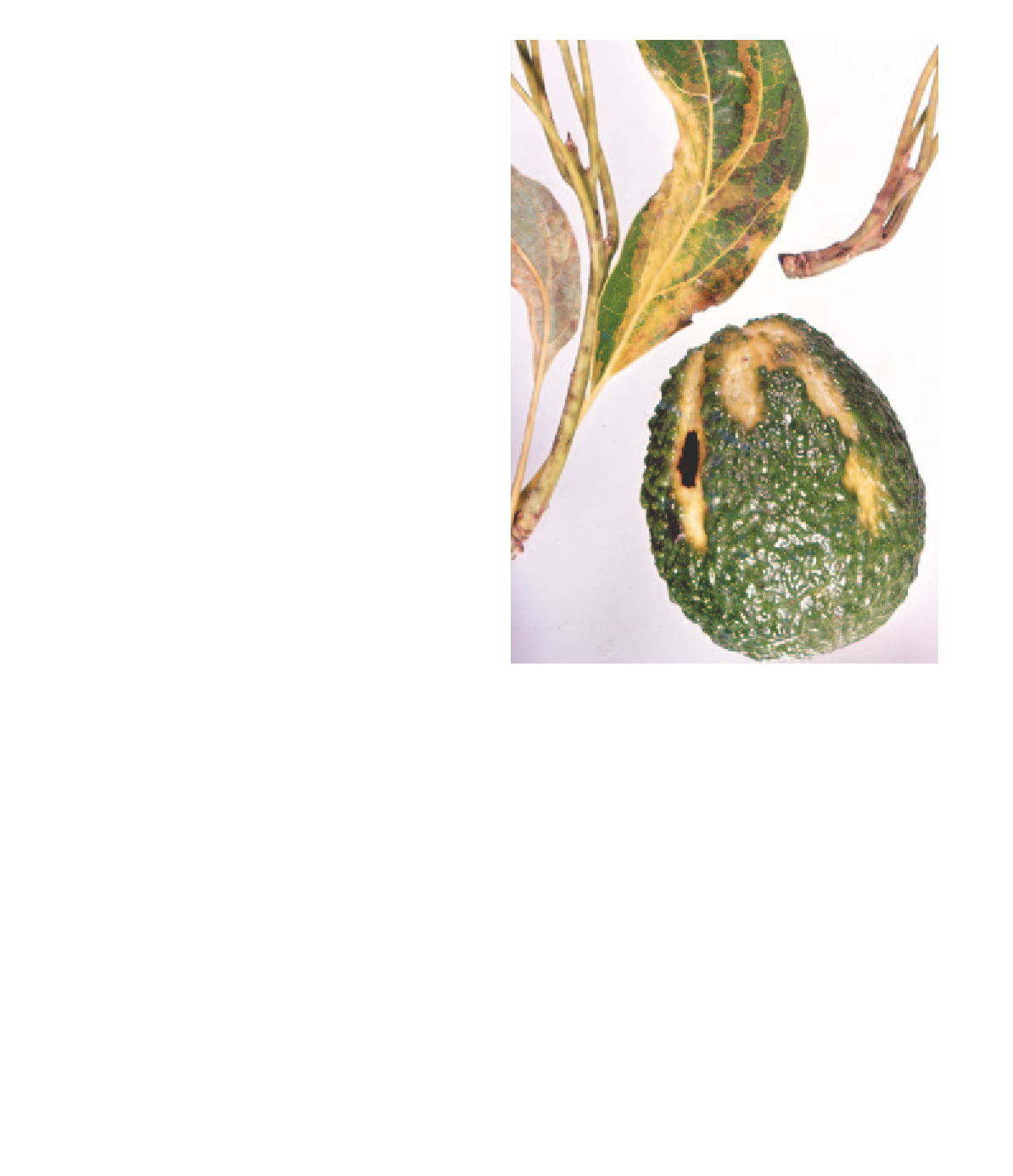Agriculture Reference
In-Depth Information
are susceptible, and avocados planted in land previously
used for tomatoes are commonly affected. It infects the
tree through the feeder roots and moves up in the
water-conducting tissues of the trunk and branches. Cool
weather favours disease development.
Importance
Verticillium wilt is not serious and infected trees usually
recover.
Management
•
Do not plant in land where susceptible crops (e.g. tomato,
potato, peanut) have been grown.
Do not interplant avocados with susceptible crops.
•
Promote growth with careful irrigation and appropriate
nutrition.
•
Prune dead wood after new growth has commenced and
burn the prunings.
•
When selecting grafting wood or seed, avoid trees that
have displayed symptoms of the disease.
•
Use Mexican rootstocks, which are less susceptible than
Guatemalan rootstocks.
•
SUNBLOTCH (UNDER ACTIVE
CONTROL)
Fig 4.32 Fruit and leaf symptoms of sunblotch viroid.
Cause
Avocado sunblotch viroid (ASBVd).
Source of infection and spread
The viroid is systemic in avocado trees but its concentration
can vary widely between branches. ASBVd has no known
insect vector and the principal modes of transmission are in
seed used to propagate rootstocks and in scion material
used for grafting. As it is readily graft-transmissible, natural
root grafts are an important mechanism of spread in the
field. Sunblotch is transmitted, although inefficiently, on
sap-contaminated pruning blades, harvesting clippers and
injection equipment. There is some evidence of pollen
transmission, but only the seed of the fruit is infected in this
way and no other part of the tree.
Symptoms
Avocado sunblotch viroid causes a range of symptoms, but
is most typically associated with discoloured (white, yellow
or pink) and depressed stem streaks, grooves on the older
branches and lesions on the fruit. On leaves, bleached or
yellow areas may initially form around the leaf veins and
this may progress to generalised variegation in the later
stages of infection. Leaf symptoms in the field are
uncommon. Trees are often stunted and exhibit a sprawling,
prostrate architecture. Trees can become asymptomatic
quickly. Symptomless trees may develop typical symptoms
following severe pruning. Seedlings from trees with typical
symptoms may be symptomless carriers of the pathogen.
This reversion in symptoms seems to be related to minor
changes in the genetic make-up of ASBVd; different strains
of ASBVd may be present in different branches. All infected
trees, symptomless or not, usually have greatly reduced
yields.
Importance
The yield of infected trees has been estimated to be reduced
by 30%. Further economic losses are incurred through the
downgrading of fruit from disfigurement and quarantine
barriers imposed on fruit bound for some export markets.
Sunblotch occurs in most countries where avocados are
grown. Although there have been serious outbreaks in the











